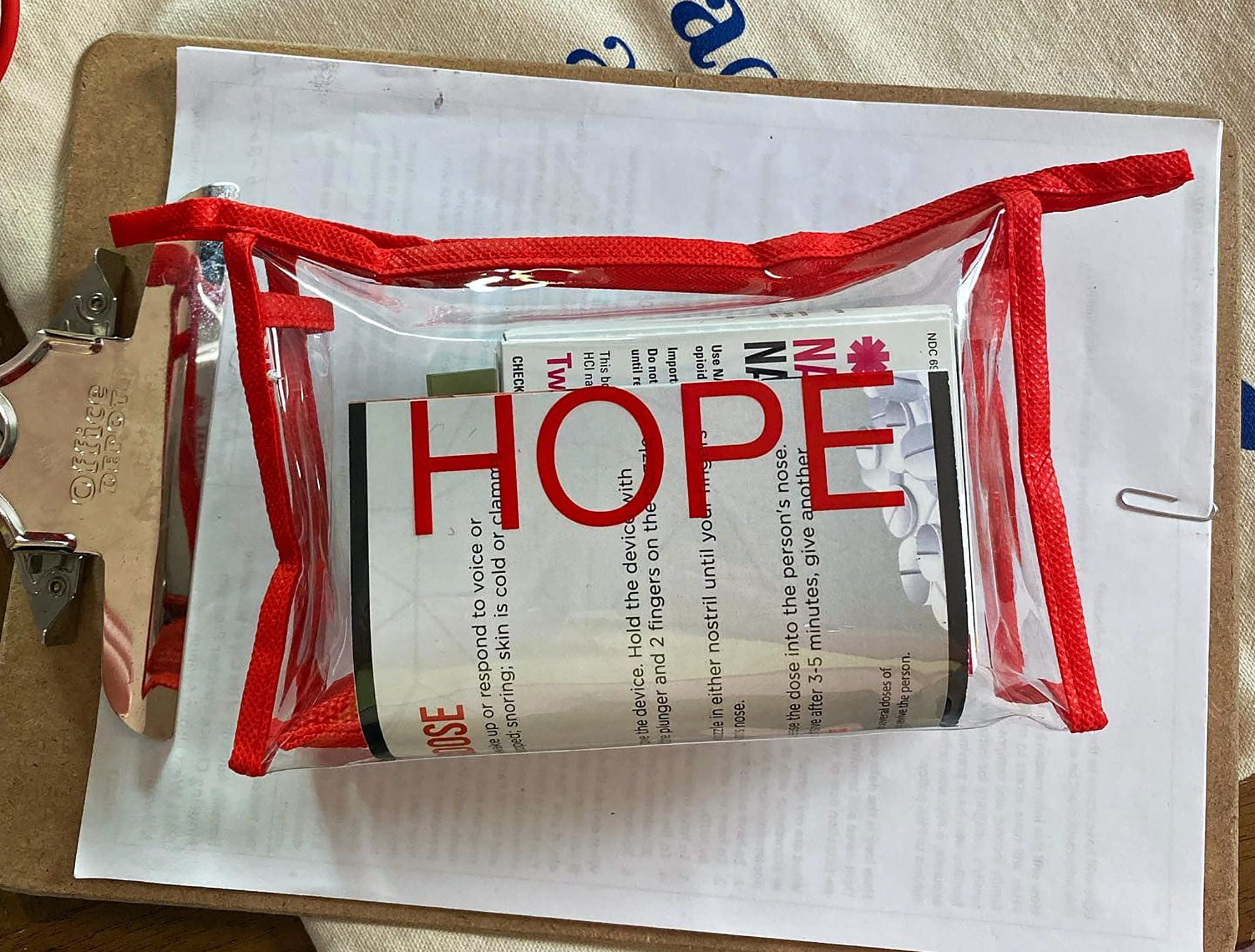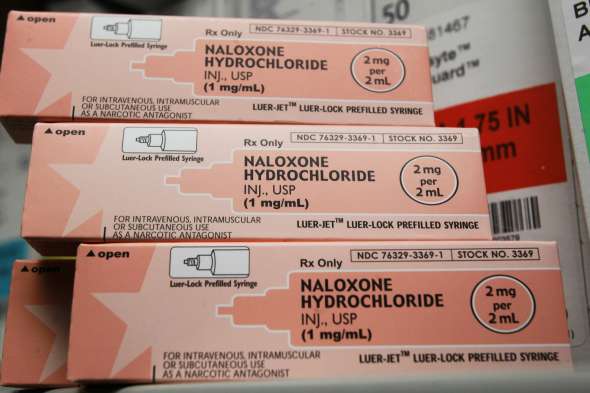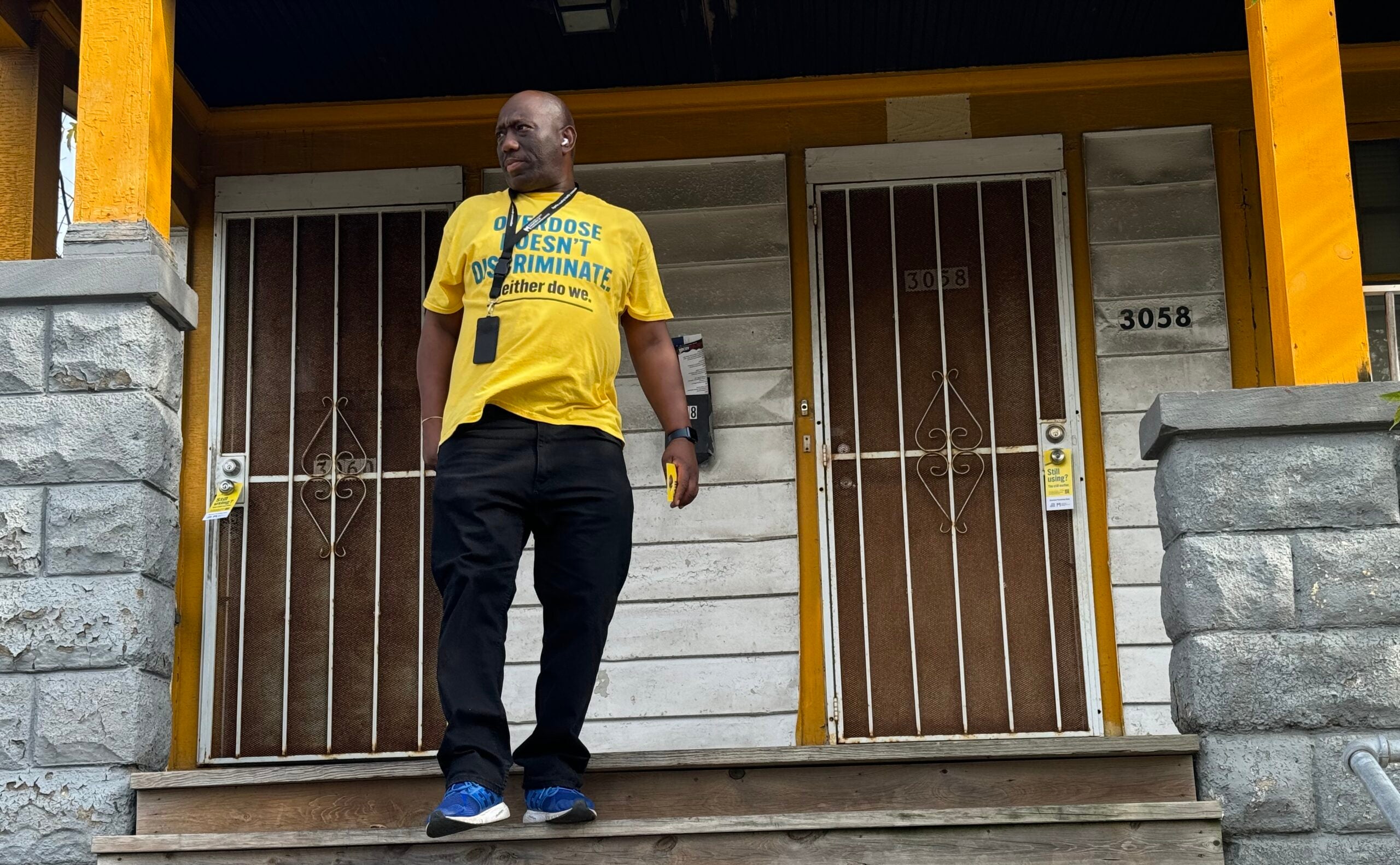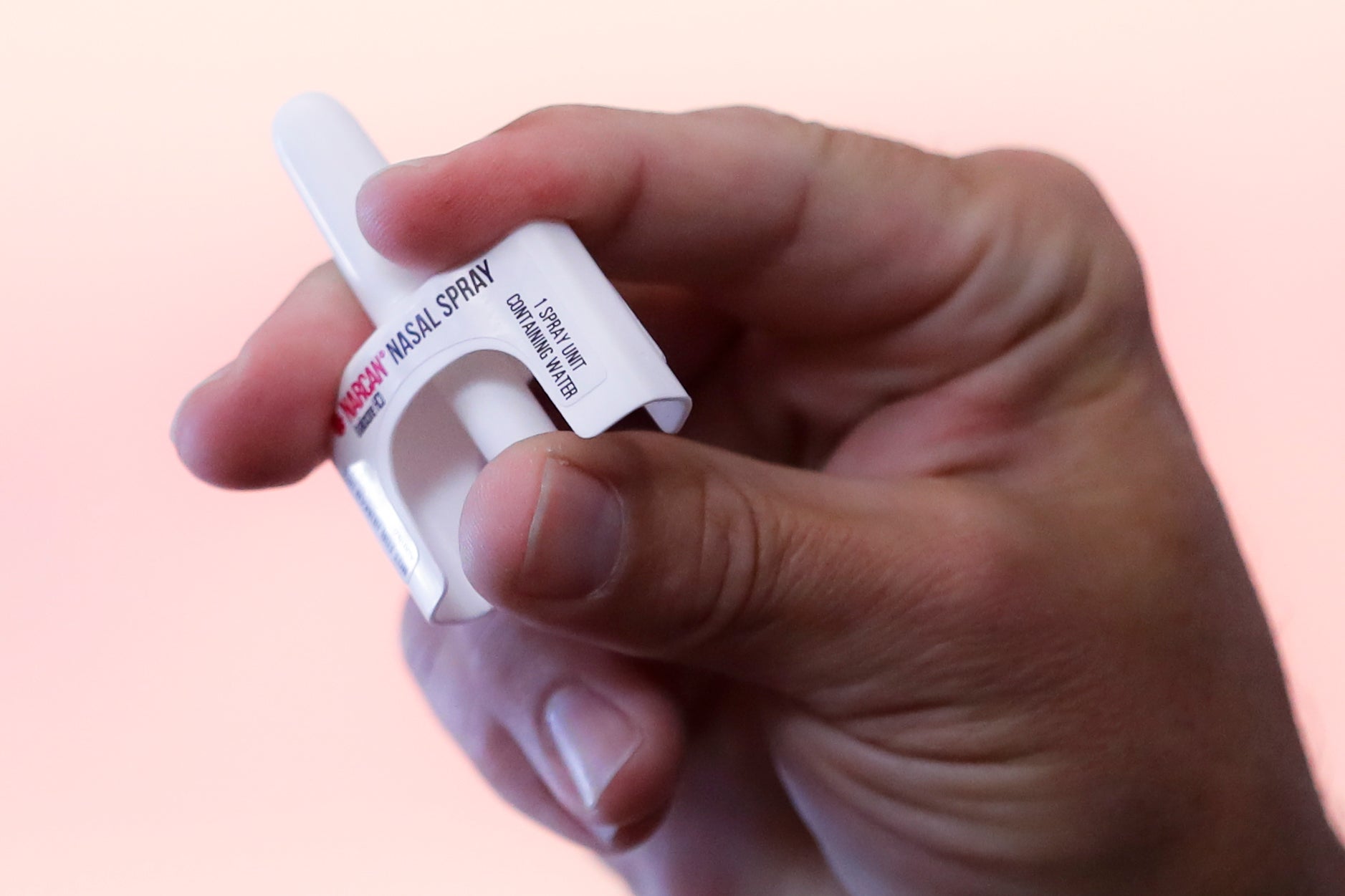Milwaukee leaders are hopeful an initiative to get Narcan into the hands of more first responders will help decrease the number of overdose deaths being seen in the county.
Last year, the HOPE Kit initiative was launched in an effort to address a record number of overdoses. Now, the Milwaukee Police Department, Milwaukee Fire Department and Milwaukee County Sheriff’s Office are all members of the initiative, which distributes harm reduction materials to the community.
The kits contain Naloxone, more commonly known as Narcan, a medication used to reverse an opioid overdose. It also contains fentanyl test stirps, CPR masks and information about treatment and community resource information cards.
Stay informed on the latest news
Sign up for WPR’s email newsletter.
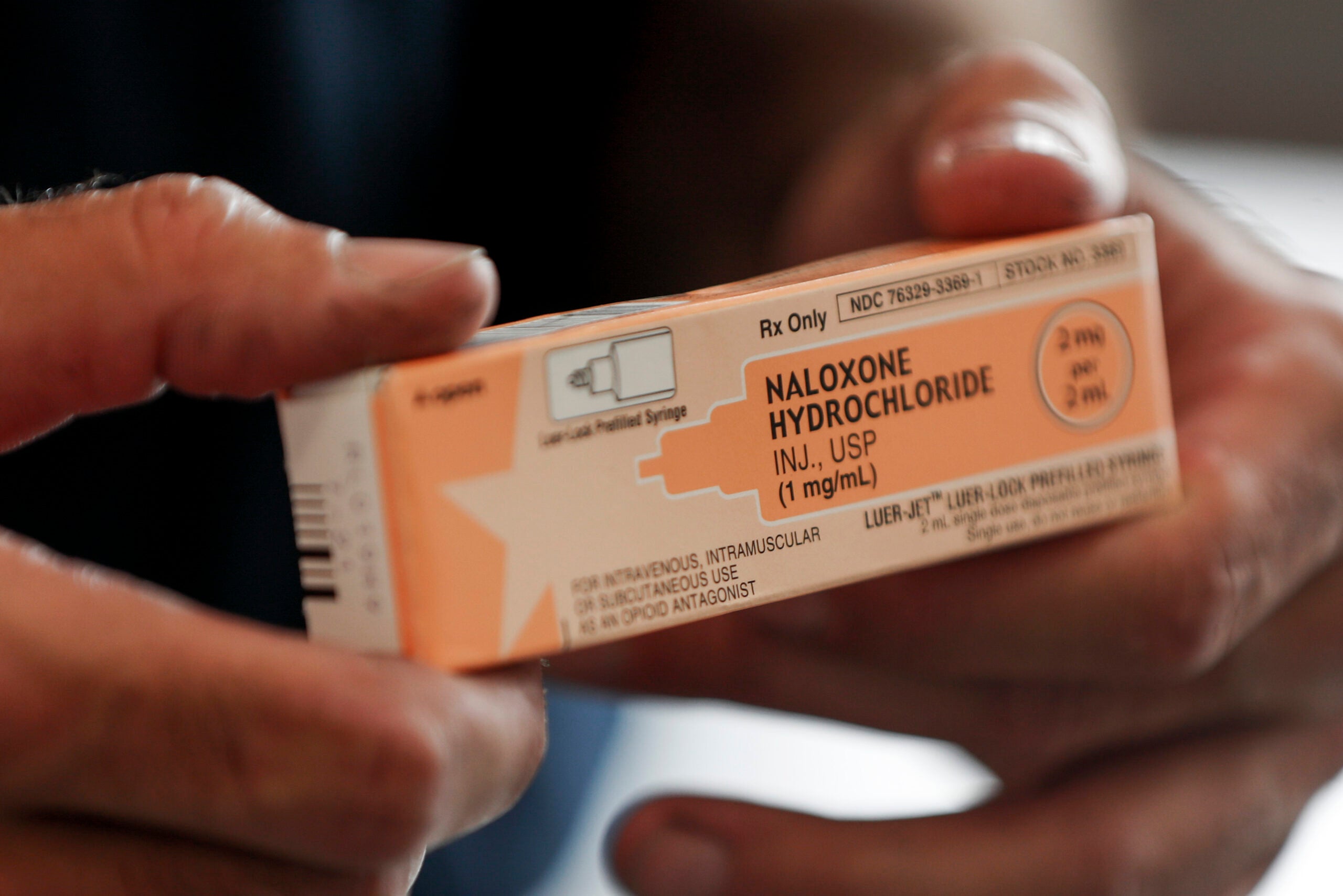
Community Medical Services is a medication-assisted treatment facility with locations in South Milwaukee and West Allis. Medication-assisted treatment centers prescribe medication for those suffering from addiction to help with withdrawal. Amanda De Leon is the organization’s community programs and integration manager and played a key role in starting the initiative.
“It’s good for the city and the county because this is going to help get Narcan into the hands of the folks who need it,” De Leon said. “They’re trying to make this initiative, they’re trying to have more of a forward-thinking, and know that this is necessary in order to get their community healthier.”
The Milwaukee Police Department announced in early May they’d start carrying the kits in Districts 2 and 3, which suffer from more overdose related calls. Milwaukee Police Chief Jeffrey Norman said the department plans to have them available at all stations across the city in the near future.
Although final numbers are pending toxicology tests, the Milwaukee County Medical Examiner’s Office estimates there were 678 drug-overdose deaths in the county in 2022. That’s a 5 percent increase over the previous year. If that estimate stands, it would be the fourth year in a row the county broke its drug overdose record.
In April of this year, there were 17 drug overdose deaths in the county in a 72-hour period, likely due to a bad batch of opioids. From May 12 to May 19, the Milwaukee County Medical Examiner’s Office investigated 22 probable overdose deaths as well. The majority of drug deaths now involve fentanyl, a synthetic opioid that’s 50 to 100 times stronger than morphine.
All Milwaukee Fire Department engines and trucks already have the kits available. During a press conference May 15, Milwaukee Fire Department Capt. Gregory Miller said he was happy to see Milwaukee police joining the effort.
“We have a wider spread in equitable distribution throughout the community,” Miller said with Milwaukee police getting involved.
Recently, a Milwaukee County Sheriff’s Officer administered Narcan to a driver who overdosed and hit the median. Milwaukee County Sheriff Denita Ball said that’s becoming more common.
“We know with the summer coming … there’s an increase on the number of people who are on the expressway, we know that that number (overdoses) is going to increase,” Ball said. “It has been alarming, the number of overdoses we have experienced.”
De Leon is on an overdose fatality review board with the county. She said overdoses tend to trend upwards in warmer weather.
“Summer is here now,” she said. “This is the perfect time to get Narcan into the hands of the folks that need it the most and giving them more options on where to get it.”
In March, the U.S. Food and Drug Administration approved the over-the-counter sale of naloxone, meaning people no longer need a prescription to get the nasal spray.
Vivent Health is a Milwaukee-based health clinic that distributes Narcan with the help of the state’s Narcan Direct program. In 2021 alone, Vivent Health distributed 16,263 doses of Narcan in Milwaukee and trained 1,390 residents on how to use the medication. Bill Keeton, vice president and chief advocacy officer at Vivent Health, praised the FDA’s decision.
“Keeping Narcan available to folks free of charge, along with the training on how to use it, is going to be something that’s really important to keep as a part of our overarching strategies for reducing opioid deaths,” Keeton said.
When it comes to harm reduction strategies, Keeton said it’s all about keeping the person alive.
“The point is to keep someone alive to the point that we can hopefully get them the support systems and the other investment in them made, so that the practice or the drug use, the need for it, goes away,” he said.
In February, the Milwaukee County Board of Supervisors allocated $11 million it received as part of a settlement of a large, multi-state lawsuit against four pharmaceutical companies to 15 projects over the next three years.
Around $2.5 million will go toward medication-assisted treatment for individuals who are incarcerated in Milwaukee County correctional facilities, according to the funding proposal. The Milwaukee County Medical Examiner’s Office will receive over $2 million to hire more staff and needed supplies, including autopsy carts. And over $1 million will be given to increase residential treatment capacity for substance abuse treatment centers in the county.
The county will also spend over $1 million on community education, including for “justice involved youth who have historically experienced barriers to opportunities for people of color and of lower incomes related to inequitable policies and practices across health care, child care, education and other social determinates of health,” the proposal says.
If you or someone you know is struggling with addiction, call the Wisconsin Addiction Recovery Helpline at 211 or text your ZIP code to 898211. You can also learn more about treatment options or how to respond to an overdose at: dhs.wisconsin.gov/opioids/index.
Wisconsin Public Radio, © Copyright 2025, Board of Regents of the University of Wisconsin System and Wisconsin Educational Communications Board.
